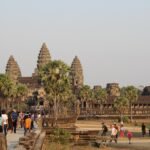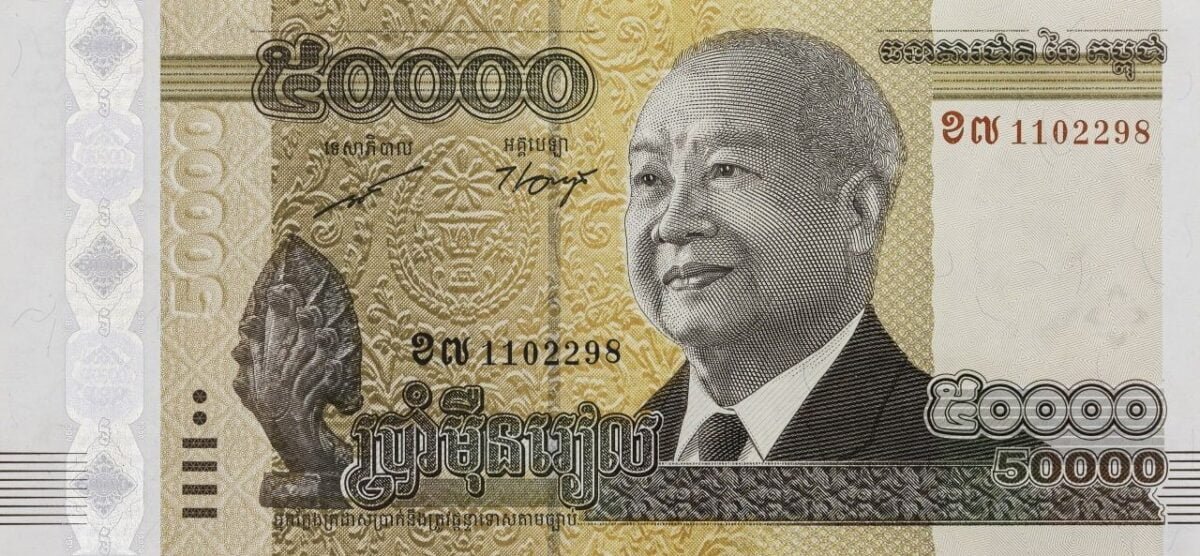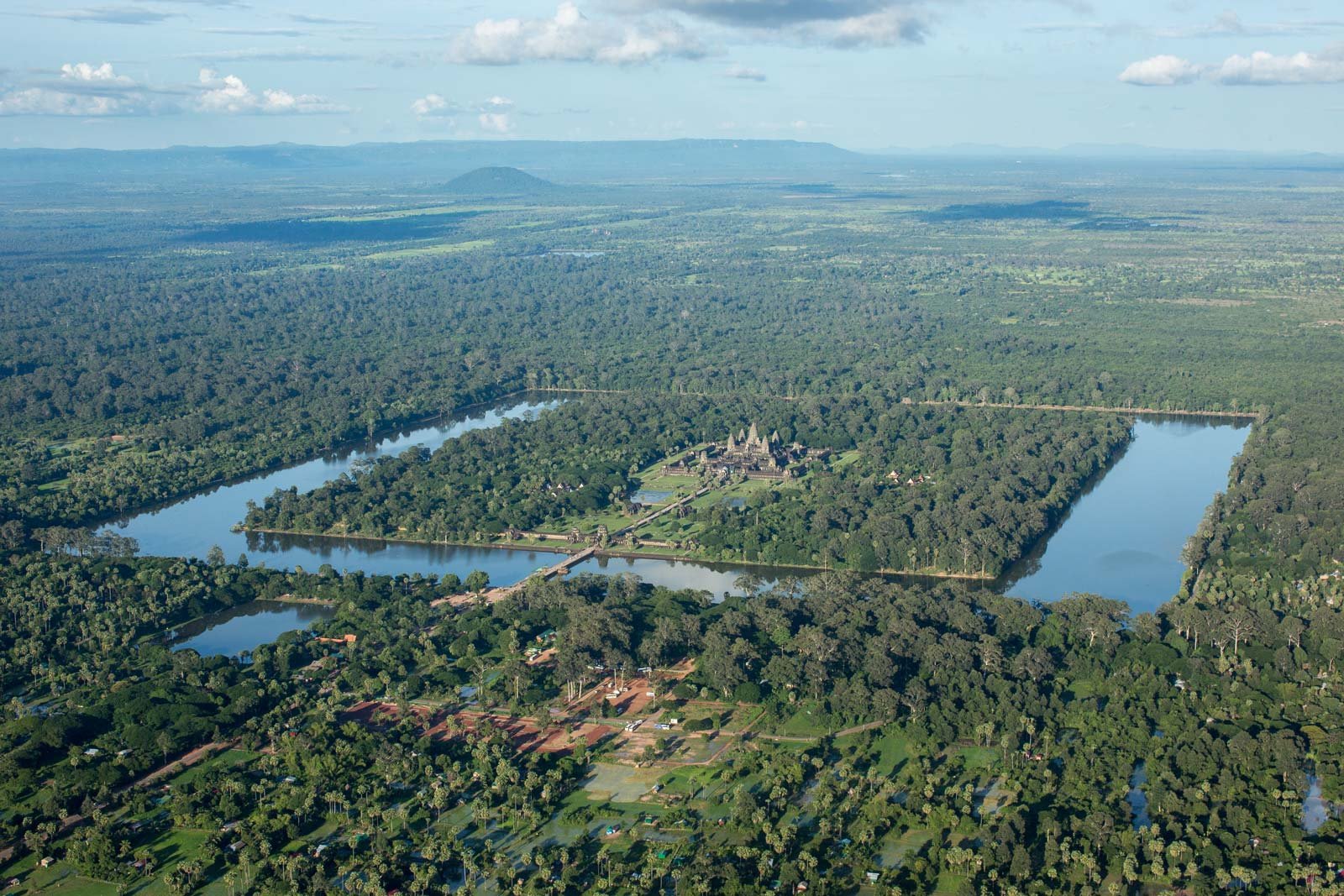Zhou Daguan (1270–?) was a Chinese diplomat of the Yuan dynasty who served under Temür Khan (Emperor Chengzong of Yuan).
He is famous for the way he wrote about Cambodian customs and the Angkor temple complex while he was there. He arrived at Angkor in August 1296 and stayed at the court of King Indravarman III until July 1297. He was neither the first nor the last Chinese representative to visit the Khmer Empire. His stay is important, though, because he eventually authored a thorough description of life in Angkor, “The Customs of Cambodia.”

His depiction is now one of the most important sources of information about historical Angkor and the Khmer Empire. Notable temples like the Bayon, Baphuon, and Angkor Wat are described in the book, along with important information about daily life and customs in Angkor.
Zhou was a native of Yongjia, which was commonly used during his time to refer to Wenzhou. In other works, he was also known as Zhou Jianguan and Zhou Dake. In his later life, he took the name “Thatched Courtyard Recluse.”
Zhou’s Record is very important to Cambodia because it is the only written record from the 13th century that has survived to the present day. It fills the gap in Cambodian history. Other documents from the time that were written on animal skin or palm leaves did not survive the tropical climate; mold and bacteria thrived in the hot and humid environment of Angkor. Other parts of Cambodian history have been deciphered from stone inscriptions in Sanskrit or ancient Khmer, and they mostly refer to the good deeds of Kings and prominent officials.
Zhou was granted entry to the Royal Palace as part of the diplomatic mission, but not to the inner palace. He described the palaces and temples, as well as the buildings in and around the city. He witnessed parades and ceremonies, as well as people’s everyday life, and he also traveled outside of the capital to the countryside. He spent much of his time in Cambodia in a house near the north gate of Angkor Thom (Yashodharapura).
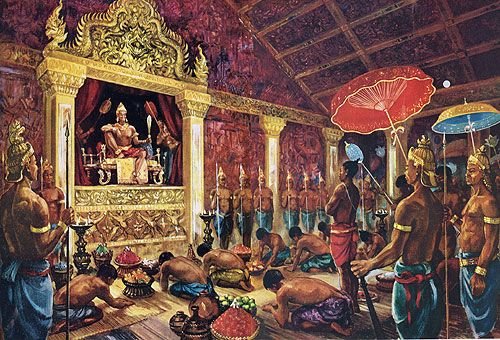
According to Zhou, the city had five gates with several doorways, one in each compass direction except the east, which had two. A huge moat surrounded the city, which was crossed by bridges with sculptures of 54 individuals pulling a nine-headed naga. The city gate had five Buddha heads, four of which faced four directions while the center one was gold. “The city is square in shape, with city gates guarded and open during the day but closed at night. Dogs and criminals are not permitted to enter the city.”
According to Zhou, the Palace was located to the north of the golden bridge and golden tower, and it faced east. The palace’s main hall was coated with lead tiles, while the rest was covered with clay tiles.
Zhou saw that rich, middle-class, and poor Khmer wore different clothes based on their social class. Men and women walked around barefoot and wrapped a piece of cloth around their waists.

Most women wore gold rings, bracelets, and hair ornaments. All of the work was done by women. The upper-class Khmer wore gold headpieces, jewelry, and long, elegantly designed clothes. There were no buildings in the marketplace. Instead, the women sold their products on large mats spread out on the ground.
A rent had to be paid to the officials for the space in the market. He saw that the Khmer people didn’t have any tables or chairs in their homes.
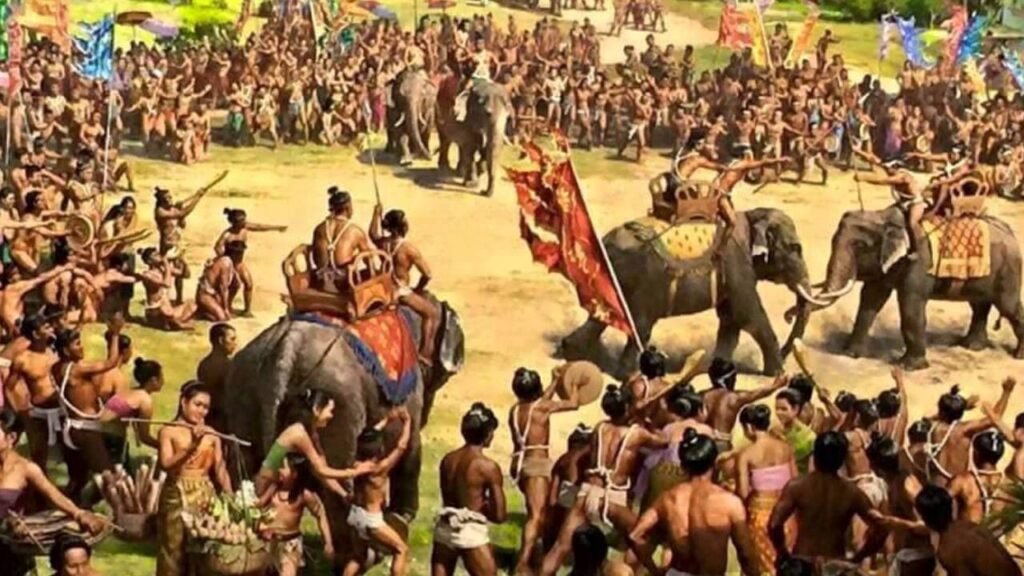
They cooked their food in clay pots that were also used to boil rice and make soup. Their ladles were made from the shells of coconuts, and soup was served in a small bowl made of woven leaves that had been made waterproof.
Zhou said that almost every month has different entertainment: 4th month: ball throwing, 5th month: welcoming/washing Buddha, 7th month: burning freshly ripened paddy, 8th month: music and dancing, pig and elephant battles, etc. The Bayon temple’s bas-relief sculptures depict daily life, including dancers, musicians, pig battles, traders, tea stores, soldiers, and war scenes.

He described Indravarman III leading a royal procession while holding a holy sword:
“When the king leaves, soldiers lead the escort, followed by flags, banners, and music. Three to five hundred palace women form a troupe, each holding a candle in their hand while wearing floral-patterned clothing and having flowers in their hair. The candles are burning even in broad daylight. The king’s personal guards are followed by more palace women with shields and lances, as well as carts pulled by goats and horses that are entirely made of gold.
Following that, ministers and princes mounted elephants, and one could see their numerous red umbrellas in front of them from a distance. The king’s wives and concubines then make an appearance in palanquins, chariots, on horses, and even mounted on elephants. They have more than a hundred gold-flecked parasols. The King finally makes his appearance while standing on an elephant and holding his sacred sword. The tusks of his elephant are decorated with gold.”
Source: History Radio, Wikipedia and Angkor database


